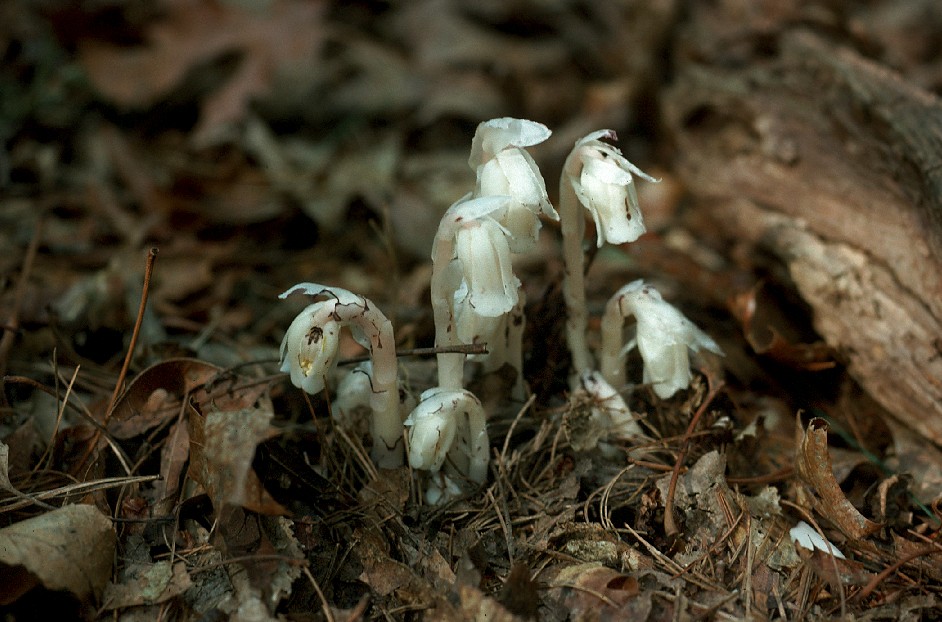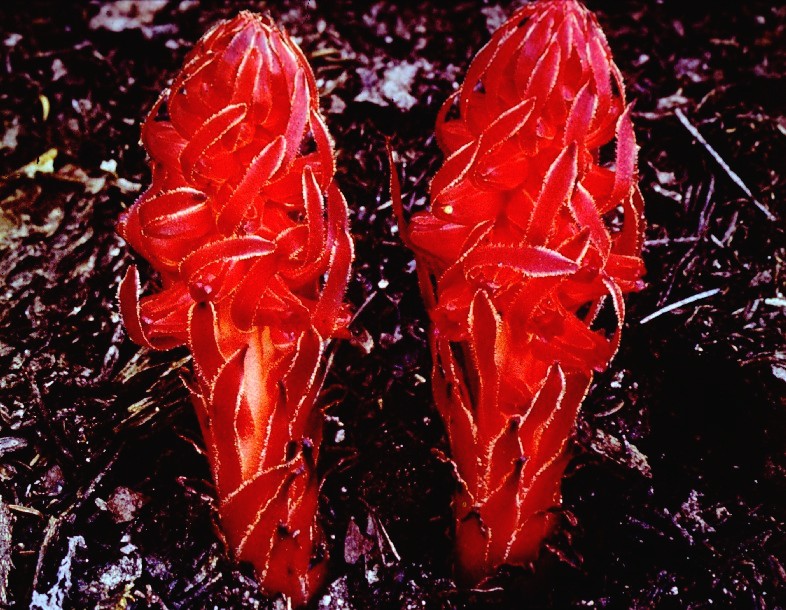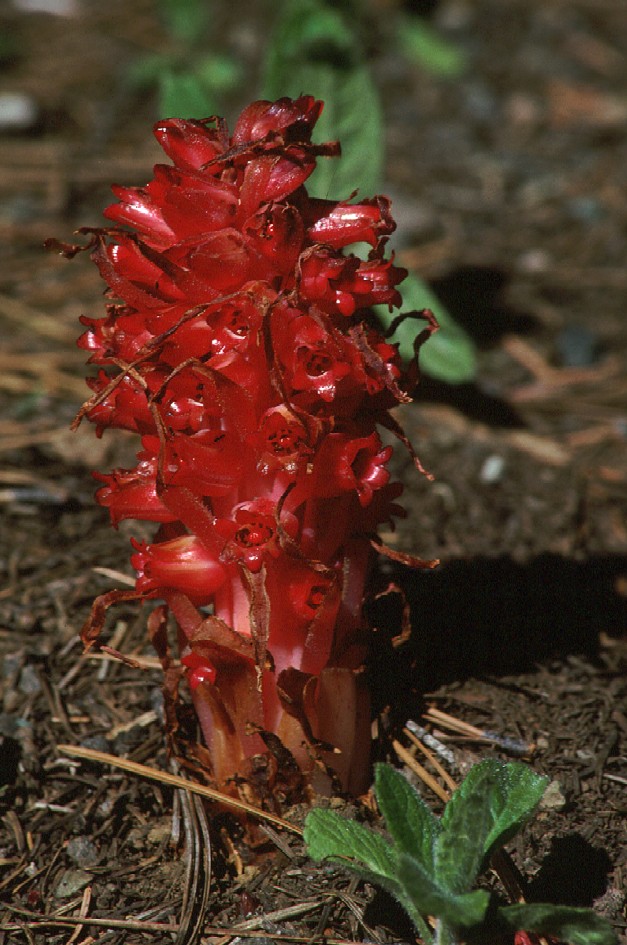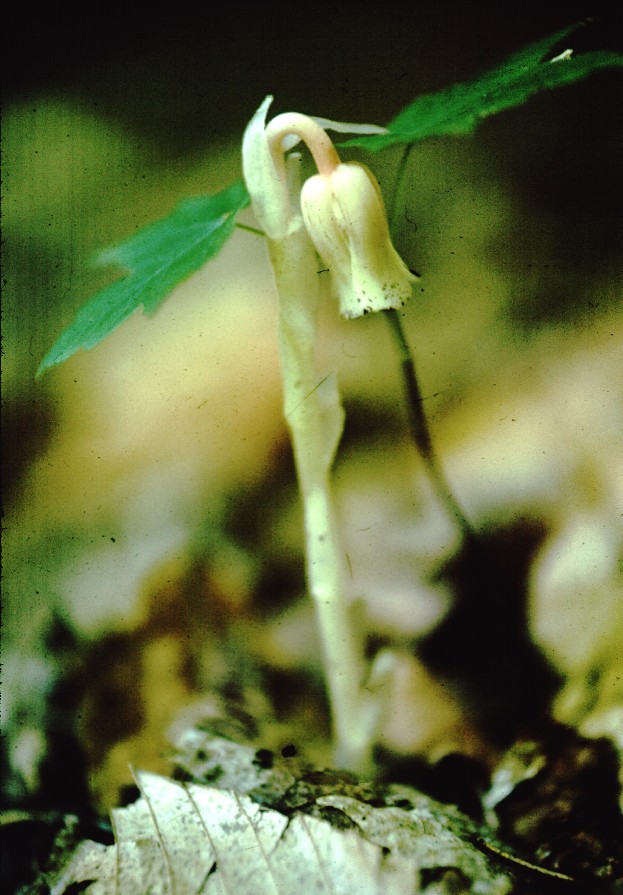
Monotropoideae
(including Plants without Chlorophyll)

 |
Monotropoideae (including Plants without Chlorophyll) |
 |
 |
 |
|
These non-green plants obtain
their nutrition through a fungal associate. The fungus connects
a photosynthetic plant
(green
plant, often a conifer) to the non-green Ericaceae. The non-green ericads
are considered mycotrophic rather than parasitic, because there is
an
intermediate (the fungus) between the "host" and the plant
that benefits. Many characteristics of the non-green ericads are reduced
in
size and in their development. For example: the sepals and petals of
many non-green ericads are difficult to distinguish and the embryo
in the non-green
ericads is usually reduced in size and less highly organized than in
the photosynthetic members of the family. Leaves are reduced to bracts
and
in most species it is essentially only the inflorescence that emerges
above ground. |
Distribution Map of Monotropoideae
throughout the World |
|
Based on DNA sequence data, members of the non-green Ericaceae
fall into two groups. One group contains just two species: Pterospora
andromeda (pine drops) and Sarcodes sanguinea (Tribe Pterosporeae). The
other group contains species such as Monotropa uniflora (Indian pipe)
and Allotropa virgata (Monotropeae). |
 |
 |
 |
back to Ericaceae |
|
back to homepage
|